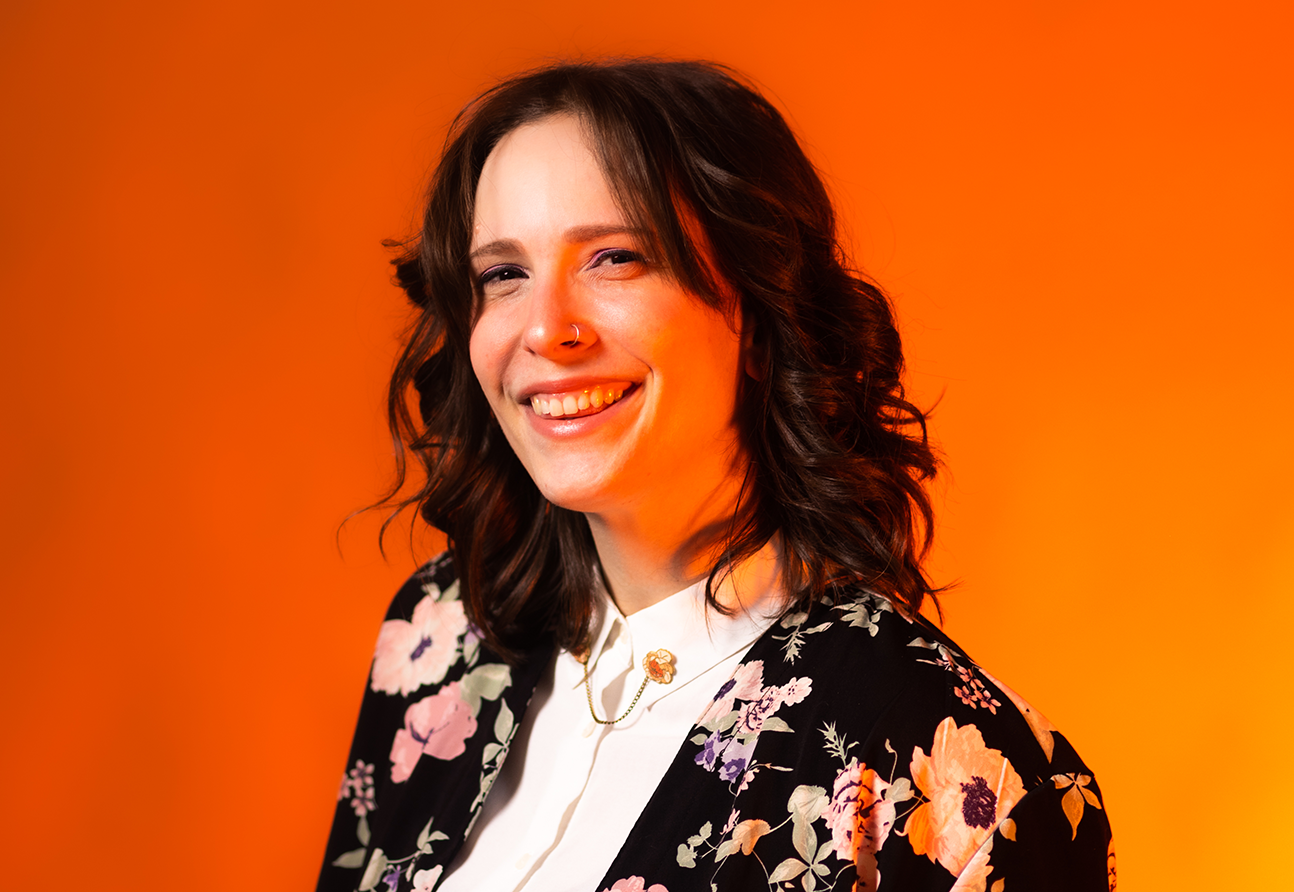Whether she’s writing about a family of sneaky raccoons, a high school where the students are Greek gods and goddesses, or a bunny a-hop-ocalypse, Stephanie Cooke always finds magic in the art of comic creation.
Cooke is a Toronto-based writer best known for her middle-grade graphic novel series The Racc Pack and Oh My Gods!. She has also worked on titles such as My Little Pony, Cat Ninja, Archie Comics, and more.
Last year, Cooke released her debut young adult graphic novel Pillow Talk. This queer, feminist coming-of-age story about body image, self-doubt and the underground extreme sport of pillow fighting was named on the ALA’s 2025 Rainbow Book List.
This weekend, from March 14-16, you can find Cooke alongside a ton of other comic creators at the Toronto Comicon Artist Alley. Ahead of her appearance at the convention, we asked her some questions about the art of writing graphic novels, storytelling for young audiences, and her favourite writing rituals.
What draws you towards writing graphic novels and comics?
The collaboration and getting to work with artists is one of the most exciting parts. You write down descriptions and art direction, and then an artist reads that and brings the story to life—it is genuine magic to me!
Additionally, I love it as a medium and format that brings new audiences to reading and helps with things like reading comprehension. Not everyone can absorb knowledge in the same way, and I love that we are embracing and making stories that are accessible to more people.

What do you like most about telling stories for middle-grade and YA audiences?
For younger audiences like middle-grade, one of my favourite parts about it is the fun that you can have on the page. There are bigger themes mixed in—for instance, Racc Pack has relevant topics such as food waste on the menu—but it’s disguised with capers, antics, and puns.
And for YA, being a young adult is filled with a lot of feelings and uncertainties about your life, the future, careers, school, and it’s nice to think that maybe I’m writing something that helps someone feel not so alone in that—to help them feel seen and understood.
Can you share a bit about your collaboration process with artists for your books?
When I have characters, a story, and a script ready to go and an artist that’s ready to come on board to a project, I am over the moon with excitement. Whitney Gardner is so incredibly talented and co-created the whole Racc Pack series with me, and I know that if I write something and Whitney visualizes a different way, I trust her fully to make changes that will elevate the story we’re telling together. It’s so much fun seeing how she sometimes deviates or elaborates but gets us to the same place.
It’s a medium where you’re taking in the art as well as the text, and it has to be a marriage of both in order to work. Ultimately, it’s about communication though, and hopefully having fun along the way.
In your YA graphic novel Pillow Talk, what were you looking to explore about the standards for women in sports?
I played ringette and hockey for fifteen years of my life, so being athletic was a core part of my identity for a long time. I never really thought twice about my body in a negative way until halfway through high school when I gained weight. I was still incredibly athletic, but I would sometimes hear comments about my body in a negative way that stuck with me. As someone who is also tall for a girl, I started trying to make myself smaller to not feel like I stood out as much. So a lot of the insecurities that our main character, Grace (aka Cinderhella), wrestles with, were my own that I put into her.
In reality, bodies are all vastly different, especially when it comes to athletics…it was really important for us to showcase body diversity in this graphic novel, and show off bodies beyond the “norm” in an athletic setting.

What are you most excited about for your appearance at Toronto Comicon?
I have two things! First, I love getting to see new and familiar faces at Comicon. It’s the best to get to talk to people about my work, and other fun interests that we share—I love talking about dinosaurs, mythology, and hearing raccoon stories from people! Writing can be so isolating, so it’s amazing to talk with other people who love comics!
The second thing is getting to see all the other creators at the show. There is nothing that gets me more excited and hyped to create new stories than being inspired by what everyone else around me is doing.
Can you paint us a picture of what writing looks like for you? Do you have any rituals or must-haves?
I always start out my day with a homemade latte, breakfast, and cartoons. I grew up enjoying morning cartoons, and it’s something I like to still do, especially since I write a lot of stuff for younger audiences. It helps me feel like I’m in the right headspace when I move over to my desk to start writing.
I try to work Monday to Friday, 9:00am-5:00pm to give myself healthy boundaries and have a life outside of my writing—it helps my brain enormously to have set hours to have to be at my desk. I think it’s really vital to have boundaries for yourself so you don’t burn out.
Other than that, my purrsonal assistant (aka my cat Kaylee) absolutely demands attention when she wakes up from her naps, so I take that time for little breaks and stretches (once she has been appeased!)
Toronto Comicon runs from March 14-16 at the Metro Toronto Convention Centre—see their website for tickets and more information.
Responses have been edited for length and clarity.



 Follow Us On Instagram
Follow Us On Instagram
